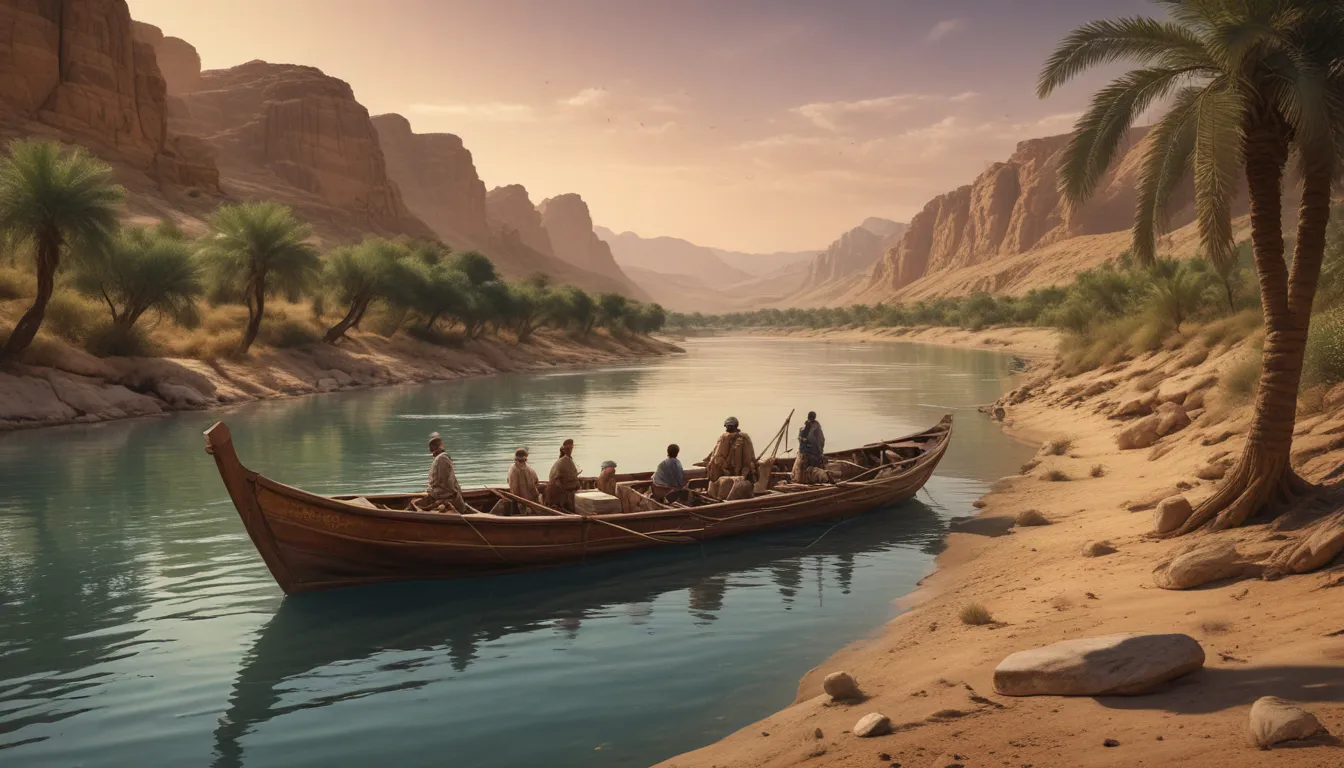The pictures we use in our articles might not show exactly what the words say. We choose these pictures to make you interested in reading more. The pictures work together with the words but don’t take their place. The words still tell you the important facts.
Have you ever been fascinated by the allure of ancient rivers and the mysteries they hold within their depths? The Euphrates River, with its rich history spanning across Turkey, Syria, and Iraq, is one such enigmatic waterway that continues to captivate scientists, historians, and adventurers alike. In this article, we will delve deep into the mystique of the Euphrates River and uncover 18 intriguing facts that will leave you in awe. From its role in shaping ancient civilizations to its vital significance in modern-day conflicts, the Euphrates River is a testament to the enduring bond between humans and nature.
Key Takeaways:
- The Euphrates River, with its long history and diverse ecosystem, has been a lifeline for ancient civilizations and contemporary communities alike.
- Despite facing challenges such as water scarcity and conflicts, the Euphrates River symbolizes resilience and sustains the livelihoods of millions of people, showcasing the enduring connection between humans and the natural world.
The Enigmatic Euphrates:
The Euphrates River, stretching approximately 1,740 miles (2,800 kilometers) through Western Asia, holds a deep significance in the annals of history and mythology. Let's unravel some of the most intriguing facts about this majestic waterway.
A Cradle of Civilization:
The Euphrates River is considered one of the cradles of civilization, playing a pivotal role in the rise of ancient empires such as Sumeria, Babylon, and Assyria. Its fertile lands provided the foundation for agriculture and settlement, shaping the course of human history.
Mythological Significance:
In ancient Mesopotamian mythology, the Euphrates was revered as a source of life and sustenance, associated with water deities and divine intervention. Its waters held a sacred allure, embodying the essence of life itself.
Biblical References:
The Euphrates River is prominently featured in both the Old and New Testaments, symbolizing power, abundance, and providence in biblical narratives. Its mention in sacred texts underscores its significance as a spiritual and cultural symbol.
Diverse Ecosystem:
The Euphrates River supports a rich array of plant and animal species, ranging from reed beds and waterbirds to otters and beavers. Its ecosystem teems with biodiversity, showcasing the resilience of nature in the face of challenges.
Water Management Challenges:
Climate change, dam construction, and political conflicts have posed significant challenges to the Euphrates River, leading to water scarcity and impacting local communities and ecosystems. The need for sustainable water management practices is paramount to ensure the river's longevity.
Historical Trade Routes:
Throughout history, the Euphrates served as a vital trade route, facilitating the exchange of goods and ideas between civilizations. Its strategic location and navigable waters made it a hub of commerce and cultural exchange.
Symbol of Resilience:
Despite facing adversities, the Euphrates River stands as a symbol of resilience and adaptability. Its enduring presence serves as a testament to the tenacity of nature and the human spirit in overcoming challenges.
Cultural Heritage:
The Euphrates River holds immense cultural significance for the people living along its banks, embodying their heritage, traditions, and identity. Its waters flow with the stories of civilizations past, resonating with the echoes of history.
Cherished Landmarks:
Along the banks of the Euphrates, one can discover iconic landmarks such as the ancient city of Babylon and the ruins of the Mesopotamian city of Mari. These archaeological treasures bear witness to the splendor of bygone eras.
Inspirational Artists:
Over the centuries, the beauty and mystique of the Euphrates River have inspired artists, poets, painters, and writers to create works of art that capture its essence. It stands as a muse for creativity and imagination, weaving a tapestry of cultural significance.
Decline in Flow:
The flow of the Euphrates River has witnessed a significant decrease over time, attributed to climate change and human activities. This decline poses challenges for agriculture and the environment, underscoring the importance of sustainable water management practices.
UNESCO Recognition:
Certain sections of the Euphrates River and its cultural landscape have been honored as UNESCO World Heritage Sites, acknowledging their outstanding universal value. These designated areas preserve the heritage and legacy of the river for future generations.
Conclusion: Navigating the Enigma
As we conclude our exploration of the enigmatic Euphrates River, we are reminded of its lasting legacy and enduring significance. From its role in shaping ancient civilizations to its resilience in the face of modern challenges, the Euphrates continues to captivate and inspire. As we strive to preserve its vitality and foster sustainable water management, let us cherish the invaluable connection between humanity and the natural world embodied by this majestic river.
FAQs:
- Length of the Euphrates River: The Euphrates River spans approximately 2,800 kilometers (1,740 miles) in length.
- Countries it Passes Through: The Euphrates River flows through Turkey, Syria, and Iraq.
- Historical Significance: The Euphrates River holds great historical importance as a cradle of civilization and a vital artery of ancient Mesopotamian empires.
- Swimming in the River: Swimming in the Euphrates River is generally not advisable due to strong currents and potential pollution.
- Fishing Activities: Fishing is a common livelihood activity along the Euphrates River, sustaining many communities.
- Endangered Species: The Euphrates River is home to endangered species such as the Euphrates softshell turtle and the Euphrates jerboa.
- Dams Along the River: Several dams have been constructed along the Euphrates River for irrigation, power generation, and flood control.
- Cultural Significance: The Euphrates River holds immense cultural significance, featuring prominently in religious and historical contexts.
- Boat Tours: Boat tours are available in select areas of the Euphrates River, offering a glimpse into its scenic beauty and historic landmarks.
- Average Width and Depth: The average width of the Euphrates River is around 400 meters (1,300 feet), with varying depths up to 20 meters (65 feet).
- UNESCO Status: While parts of the Euphrates River basin are recognized as UNESCO World Heritage Sites, the entire river itself is not designated as such.
Embark on a journey of discovery and wonder as you unravel the mysteries of the Euphrates River. Immerse yourself in its ancient tales, behold its breathtaking landscapes, and marvel at the enduring legacy of this enigmatic waterway. Let the echoes of history guide you through its currents, as you witness the resilience and majesty of the Euphrates River, a true marvel of the natural world.






